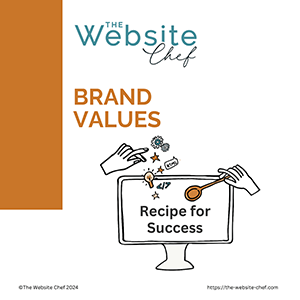Colour Your Brand: Recipe for Success
- The Importance of Colour in Branding
- When it comes to building your brand, one of the most powerful tools at your disposal is colour. Colours do more than just make things look pretty; they evoke emotions, influence perceptions, and can even impact buying decisions. Think about it—certain colours can make us feel calm, excited, or even motivated!
- Choosing the right colours for your brand is essential because they help communicate your values and personality to your audience. Whether it’s the calming blues of a spa or the vibrant reds of a fast-food chain, colours play a key role in how customers perceive and connect with your business.
- Discover how you can harness the power of colour to make your brand truly stand out!
- Your graphic designer will help you find the perfect shade or complementary colours. Having a general idea of the colours you want will guide them in the right direction.
- Accessibility: When choosing colours, keep in mind how different screens display them. The same logo might look different on five different screens. This is especially important for your website and apps. For example, pale yellow can almost disappear, and red text on certain backgrounds can be hard to read. Also, make sure there is enough contrast, as it’s crucial for accessibility.
- Common Associations with Colours
- Understanding the associations tied to different colours can help you choose the right palette for your brand. Here’s a quick overview:
- Red: Energy, passion, excitement, urgency. Often used in sales and food industries.
- Blue: Trust, reliability, calmness. Commonly used by banks and tech companies.
- Yellow: Optimism, happiness, creativity. Great for attracting attention but use sparingly as it can be overwhelming.
- Green: Nature, health, tranquillity, growth. Popular in eco-friendly and wellness brands.
- Purple: Luxury, wisdom, creativity. Often associated with premium brands and spirituality.
- Orange: Fun, enthusiasm, friendliness. Good for brands targeting a younger audience.
- Black: Sophistication, elegance, authority. Used by high-end and fashion brands.
- White: Simplicity, purity, cleanliness. Common in minimalist designs and health-related brands.
- Brown: Stability, reliability, warmth. Often used by brands that want to convey a rustic or organic feel.
- Choosing the right colours can help communicate your brand message effectively and create the desired emotional response in your audience.
- Defining Your Brand Personality
- In my Brand Values Recipe for Success, we talked about mission statements, visions, and brand personality. Now, it’s time to use those insights to find the colours that best match your brand’s personality. Here are some helpful things to think about:
- Demographics and colour preferences
- Cultural considerations in colour choices
- Aligning colour choices with audience expectations
- Common colour schemes in your industry
- Analyzing competitors’ colour choices
- Differentiating your brand through colour
- By keeping these factors in mind, you’ll be able to choose colours that truly resonate with your audience and make your brand stand out.
Further reading: My Brand Values Recipe for Success
- Creating a Colour Palette
- When putting together a colour palette for your brand, you’ll want to pick primary, secondary, and accent colours. Using tools and resources like Adobe Colour and Coolors can be super helpful for visualizing how everything will come together.
- Applying Your Colours Consistently
- Once your colour palette is finalized, you’ll want to integrate these colours into your logo, website, and marketing materials. Creating a style guide for colour usage is a great idea, especially if you have a team working on marketing and media. A style guide is also easy to share with external consultants or contractors, ensuring colour consistency across all platforms.
Download a PDF version for reference.








